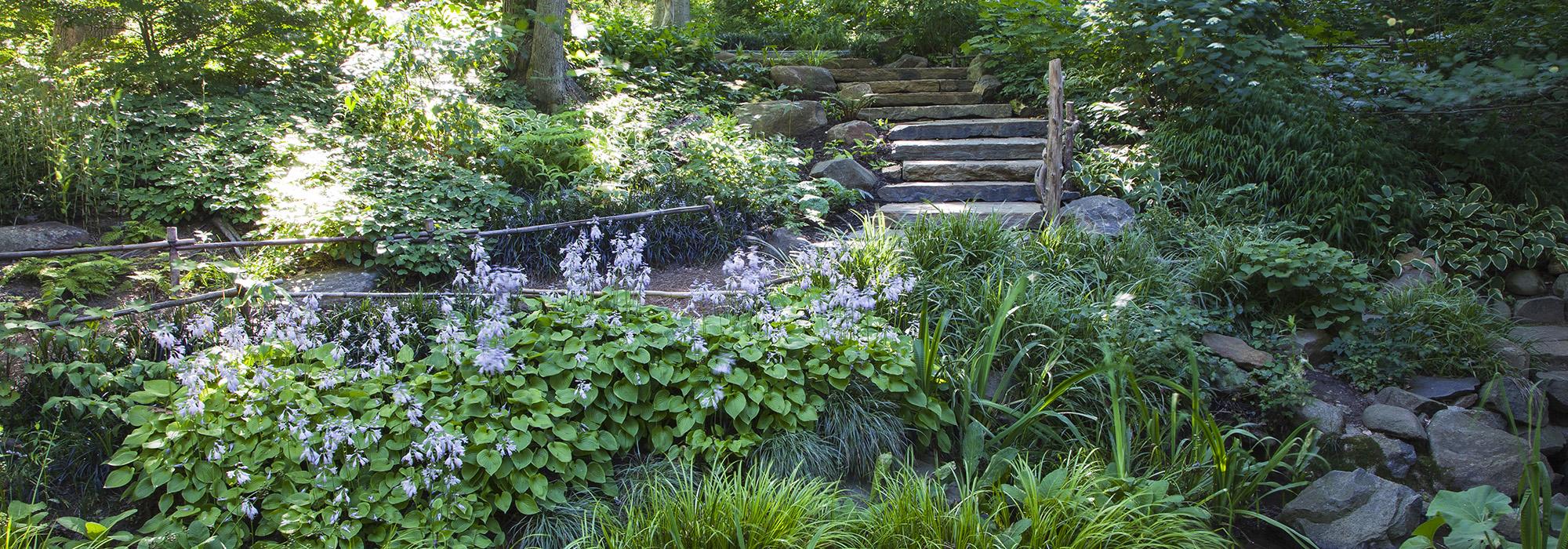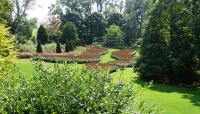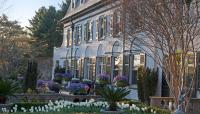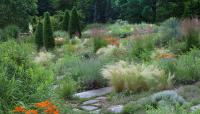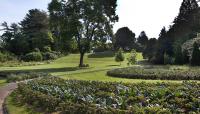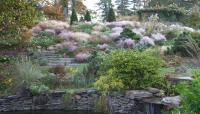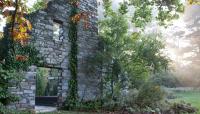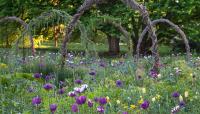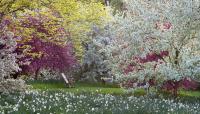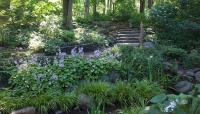Landscape Information
This 35-acre suburban estate on Philadelphia’s affluent Main Line takes its name from the legendary rooster, prominently displayed on the estate’s historic entrance gate pillars. Designed for Adolph Rosengarten, Sr. by architect Charles L. Borie and completed in 1913, the Pastoral Style manor was sited atop an expansive, undulating lawn. Though landscape architect Thomas Sears drew plans for an original landscape design, there is little evidence that his design was ever installed. In 1925 Charles Willing and Joseph P. Sims enveloped Chanticleer with a pool, teahouse, and sunken garden. Expanding their estate in 1933 from its original six acres, the Rosengartens purchased the nearby Minder House for their son and, a few years later, constructed another house for their daughter. Working at the Minder House in 1958, Willing and Sims developed gardens incised by a rivulet which cascades into a large pond.
Ten years before the death of Adolph Rosengarten, Jr. in 1990, The Chanticleer Foundation was established; the gardens opened to the public in 1993. Since then, the setting, buttressed by woodlands and an orchard, has witnessed a steady redesign with the introduction of variously themed gardens connected by a meandering, mile-long path. The Rosengarten’s tennis court was transformed into a parterre garden of herbaceous plants and the Teacup Garden was designed to include subtropical flora centered around a small, Italianate fountain. In 2000 landscape architect Mara Baird created the Ruin Garden on the foundations of the razed Minder House. Chanticleer was listed in the National Register of Historic Places in 1984.



